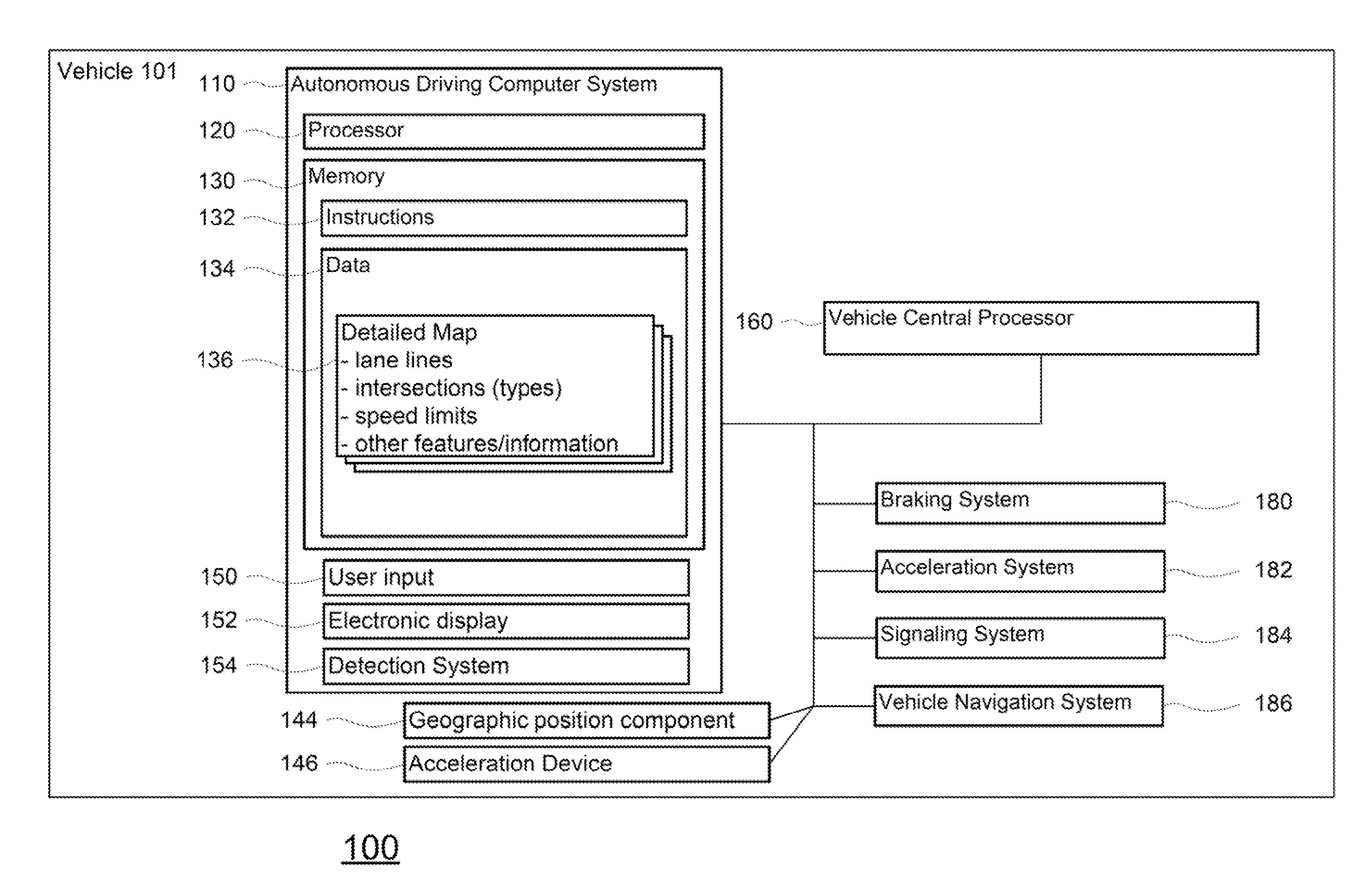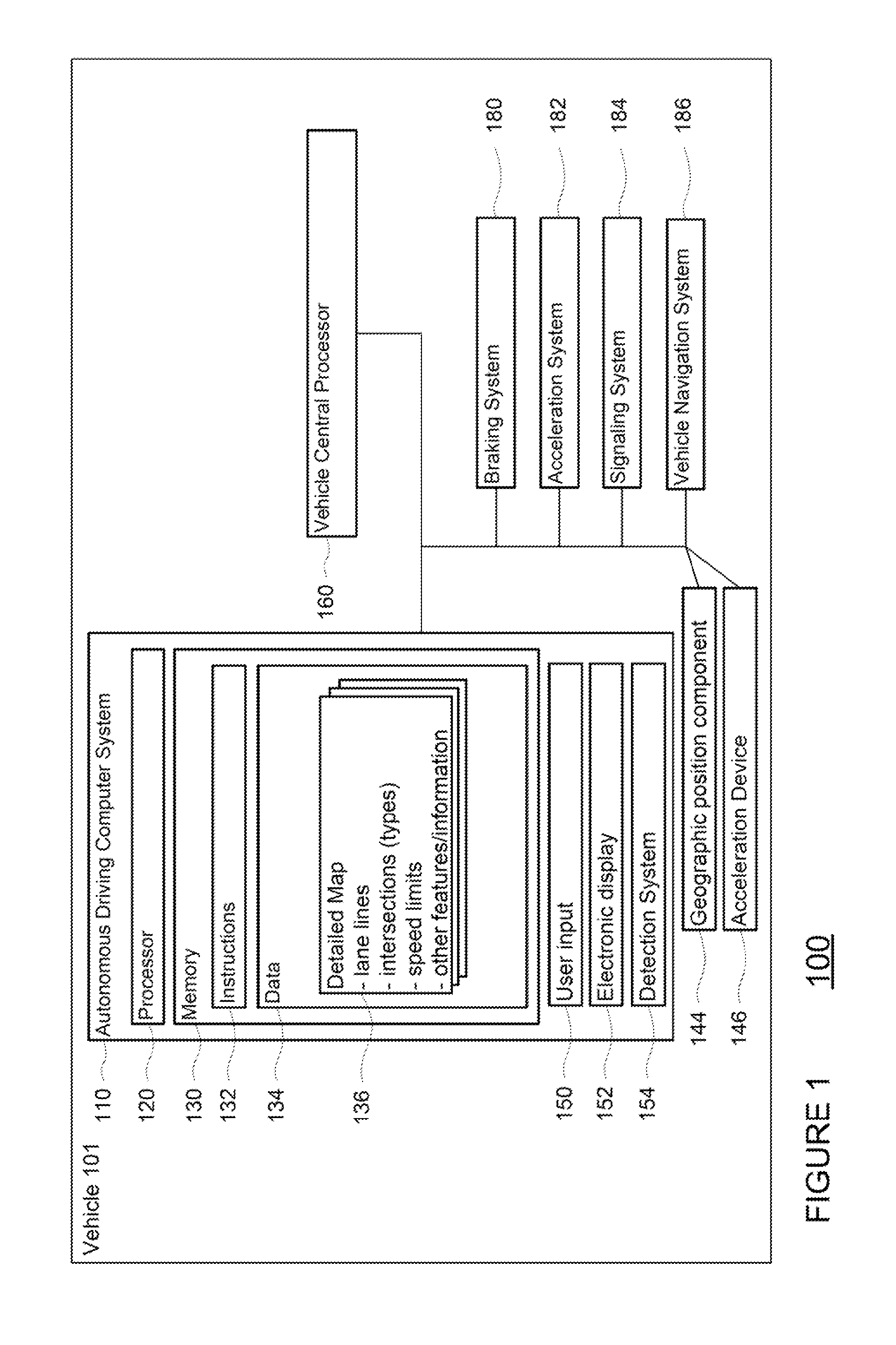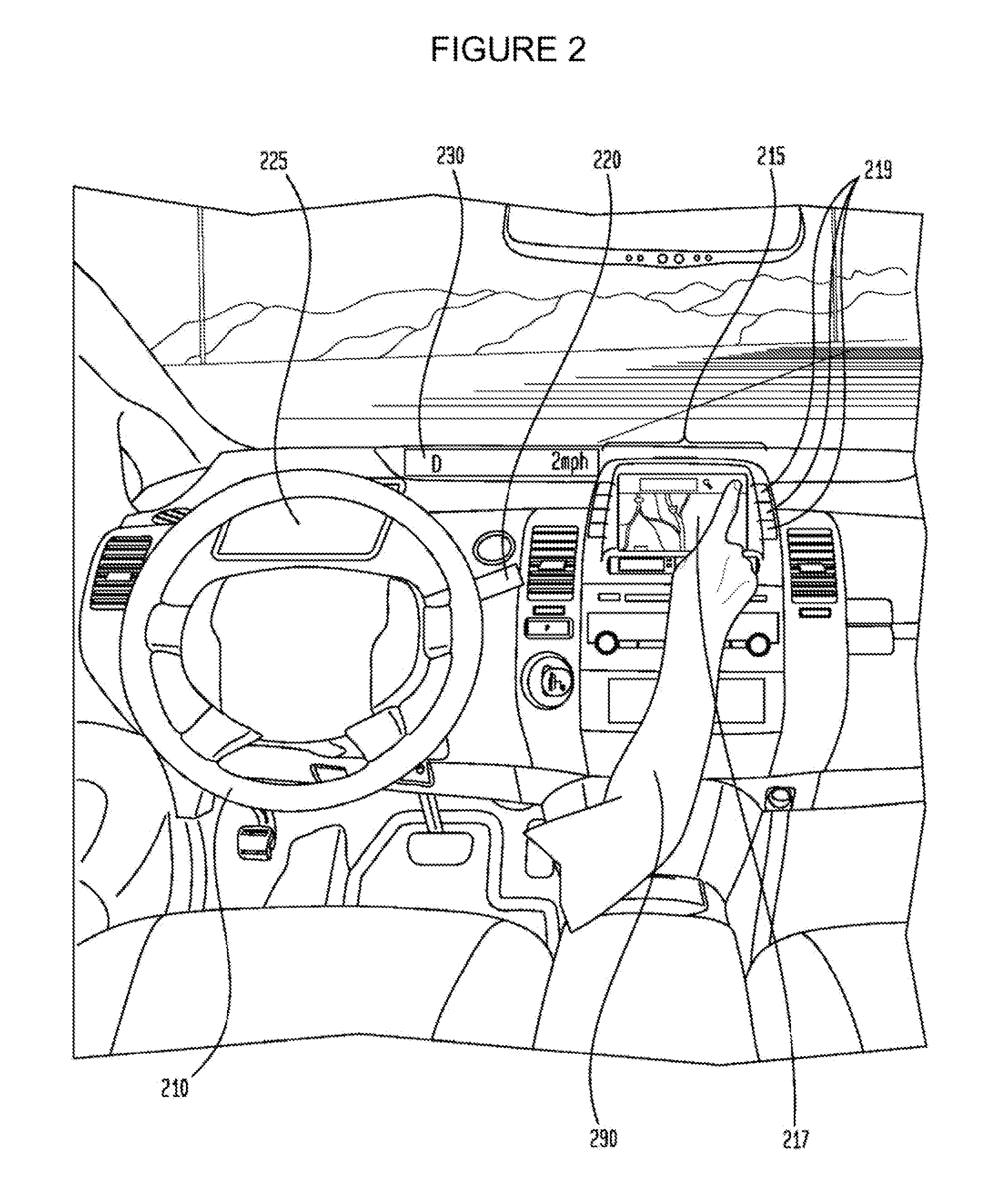Pose estimation using long range features
a technology of long-range features and estimation methods, applied in the field of long-range estimation using long-range features, can solve problems such as difficulty in achieving very high accuracy
- Summary
- Abstract
- Description
- Claims
- Application Information
AI Technical Summary
Benefits of technology
Problems solved by technology
Method used
Image
Examples
Embodiment Construction
[0021]The disclosure relates generally to using an object detected at long range to increase the accuracy of a location and heading estimate based on near range information. For example, an autonomous vehicle may use data points collected from a sensor such as a laser to generate an environmental map of environmental features around the vehicle. The environmental map may be then compared to pre-stored map data to determine the vehicle's geographic location and heading (for example, latitude, longitude, and altitude coordinates and heading).
[0022]A second sensor, such as a laser or camera, having a longer range than the first sensor may detect an object outside of the range and field of view of the first sensor used to generate the environmental map. For example, the object may have retroreflective, brightness, or intesity properties which make it identifiable in a camera image or from laser data points at longer ranges, for example, 50, 75, 100, 150, 200 meters or more. The location...
PUM
 Login to View More
Login to View More Abstract
Description
Claims
Application Information
 Login to View More
Login to View More - R&D
- Intellectual Property
- Life Sciences
- Materials
- Tech Scout
- Unparalleled Data Quality
- Higher Quality Content
- 60% Fewer Hallucinations
Browse by: Latest US Patents, China's latest patents, Technical Efficacy Thesaurus, Application Domain, Technology Topic, Popular Technical Reports.
© 2025 PatSnap. All rights reserved.Legal|Privacy policy|Modern Slavery Act Transparency Statement|Sitemap|About US| Contact US: help@patsnap.com



